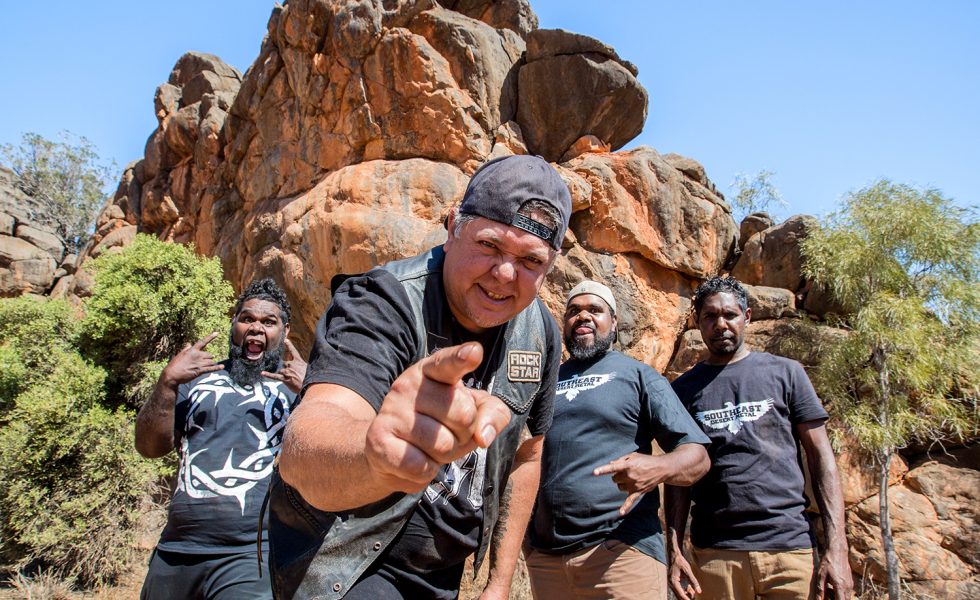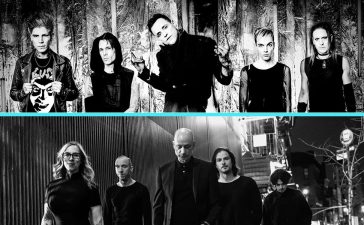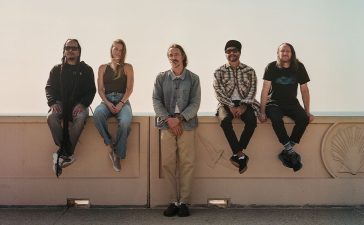As Billy Corgan once put it: “Heavy metal is universal…Somewhere in our primal being we understand.” Since the ’70s, the genre would find its footing all over the world, in countless languages and cultures; from the Mongolian grasslands to the Aztec ruins. Even in the harsh, inhospitable climate of the Australian outback, heavy metal blooms.
About an hour’s drive from Alice Springs, you’ll find Santa Teresa, an Arrernte indigenous community that’s about as central and remote as any community on Earth. Visit at the right time, and you may hear the sounds of Southeast Desert Metal in the middle of band practice.
The group carries the tentative title of the world’s most isolated heavy metal band, and as we would learn speaking with vocalist/guitarist and chief songwriter, Chris Wallace, it’s a title that they hold with pride.
Blunt Magazine caught up with the act ahead of their performance at Parrtjima – A Festival Of Light.
Much like most heavy metal assemblies, Chris and his fellow band members were raised on a healthy diet of the good stuff: Judas Priest, Iron Maiden, AC/DC, Black Sabbath and other ’80s metal staples.. “I liked the way they play; the music, the style, performing, the singing, and I’ve always wanted to play like them,” Chris says of his influences.
At its core, Southeast Desert Metal is a family band. Chris is joined by relative and drummer Wallace alongside guitarist Gavin and his relative, bassist Derek. As such, family and community are important tenets for Southeast Metal Band, bleeding into the themes of their music.
Though their blistering instrumentals take lead from the metal genre, lyrically, Southeast Desert Metal tap into the rich and important history of their Arrernte culture; a culture that dates back some 40,000 years.
“On the first album, that’s my grandma’s story,” Chris explains, referring to their self-titled 2015 debut which is heavily influenced by stories pertaining to the Wallace’s totem animal, the eagle. “So I’m just pretending I’m a bird!” he adds, “it is beautiful for me.”
“I am that eagle looking down.” Chris has stated in the past, “We are an Eagle Dreaming clan. We all follow that bird. Iron Maiden has Eddie, well, we have that eagle we follow. And that eagle is a spiritual bird to us.”
The ban’ss later work, 2018’s Break The Silence, saw more contemporary story telling woven into the cultural messages. ‘Send Me An Angle’ for example, is about not losing your way in the modern world. “You can get help,” Chris says of the song’s positive message.
Chris points to the band’s third album, expected in July 2021, as another example of using metal as a vehicle for his culture: “We wrote one song in language.” It could very well be the first heavy metal song to feature an Indigenous Australian language. “There’s a cultural way of singing, and there’s a modern way of singing. I’m trying to combine the both of them, on the same song.”
“There are people next to you that can help with your addiction, or whatever. When I was a teenager, everybody in their life when they’re teenagers, they do silly things.”
Whether it’s tales from centuries ago, or metaphors for current era situations, Southeast Desert Metal’s modus operandi remains the same; to use their platform to educate, and empower, the next generation of indigenous youths. “I just want to send a strong message to young people today,” Chris says.
He continues: “They don’t seem to care about their culture anymore; they’re just sort of going on their own paths, doing the wrong things. I grew up with my uncles and all that, [with a] cultural way of living. That’s the reason why I just wanted to share a bit of the story that I was told. I just wanted to pass it on through music.”
It appears to be working. Speaking of today’s young people, Chris says that “they’re picking up on these stories and a lot of them are learning my side of the culture.” The proof is in the pudding, with some young fans from central Australia deciding to pick up instruments themselves.
“There are a couple of young bands uprising now. I was just sort of wanting to show them that there’s another direction you can take the music.”








